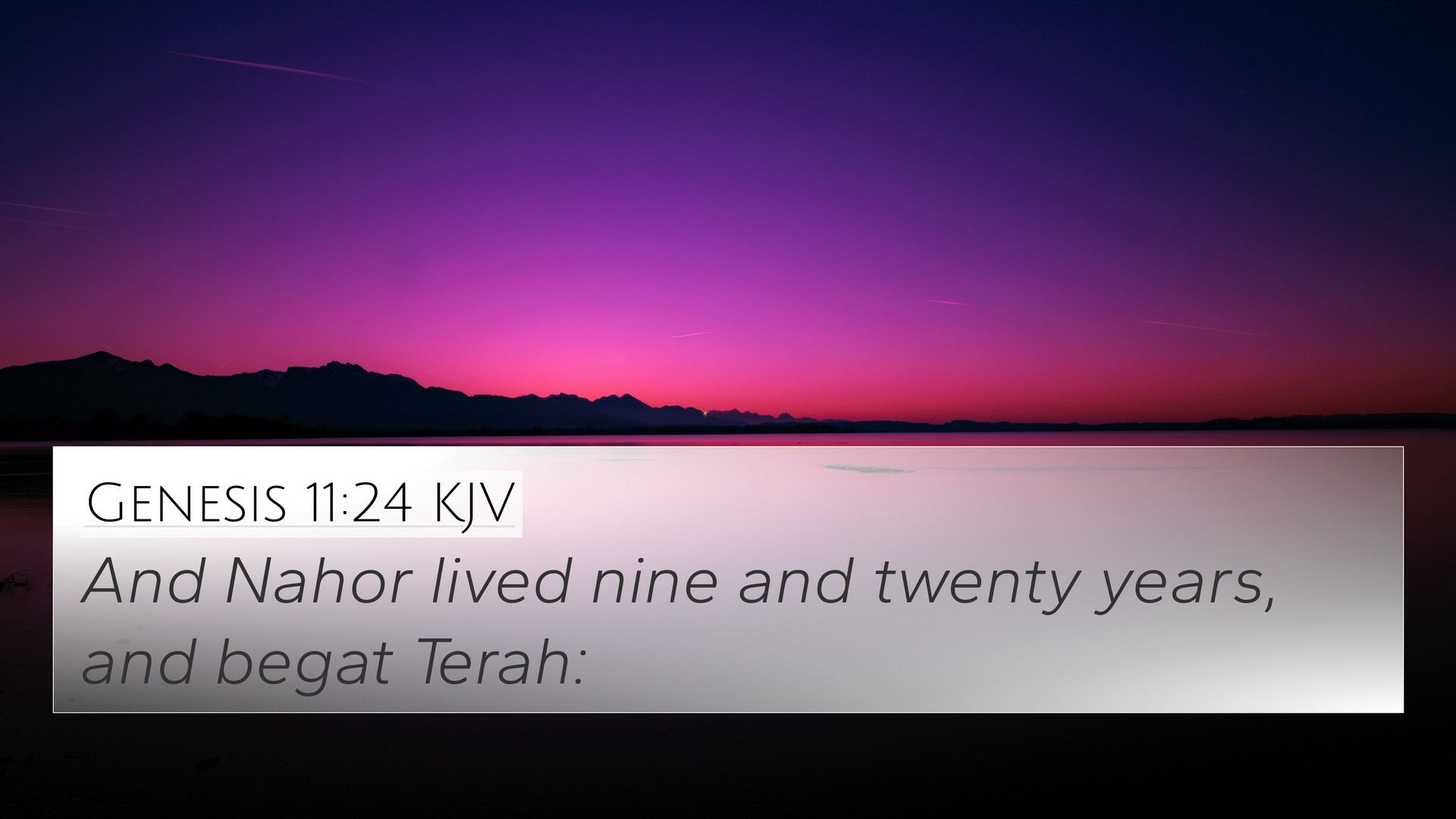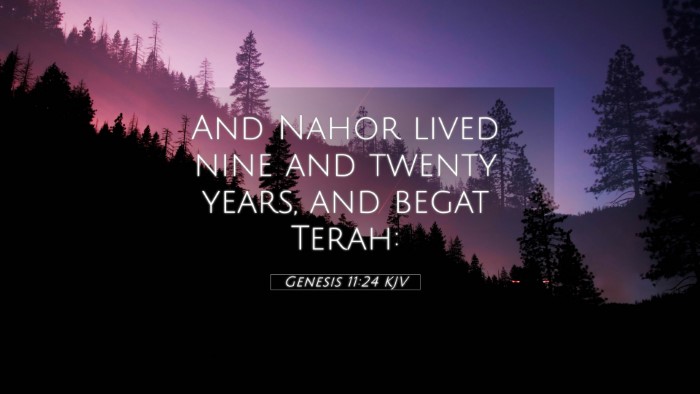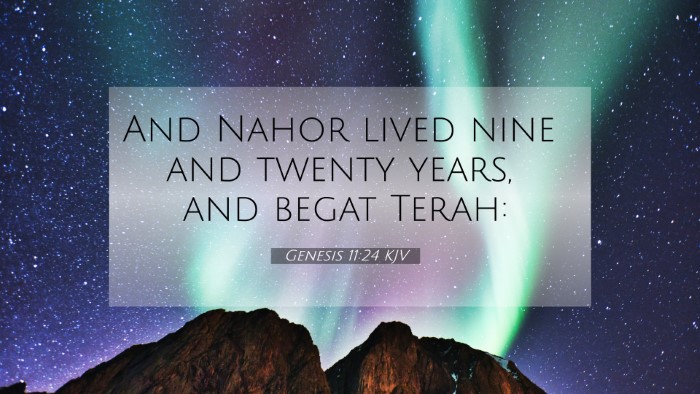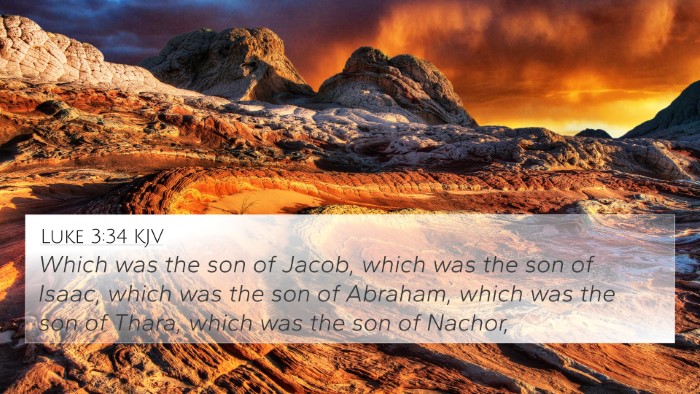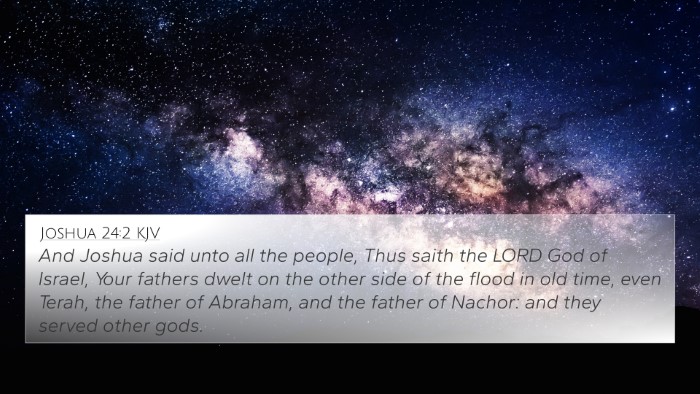Genesis 11:24 states, “And Nahor lived nine and twenty years, and begat Terah.” This verse marks a significant moment in the genealogy leading up to the patriarchs of the Hebrew Bible, laying the groundwork for understanding the lineage of Abraham.
Meaning and Commentary Insights
This verse functions as a genealogical marker, indicating the age of Nahor at the birth of his son, Terah, and thus tracing the lineage of Abraham, one of the key figures in biblical history.
Matthew Henry's Commentary
Matthew Henry notes that the mention of Nahor's age at Terah's birth serves to highlight God’s providential hand in the unfolding narrative of redemption. It emphasizes how each generation is essential in God’s plan leading to the calling of Abraham.
Albert Barnes's Notes
Albert Barnes adds that the timeline provided in this verse supports the chronology of early Biblical events. It underlines the continuity and the faithfulness of God's promises through generations, showing how God’s covenant unfolds through these familial lines.
Adam Clarke’s Commentary
Adam Clarke elaborates on the significance of the names in this lineage, linking them back to family history and cultural identity. Clarke encourages readers to reflect on how genealogies in the Bible are not merely archaic records but vital connections that inform the larger narrative of Scripture.
Cross-References
This verse connects with several significant scriptural passages that illustrate the thematic continuity and inter-Biblical dialogue:
- Genesis 12:1-3 - The calling of Abram signifies the covenant initiated with Terah's lineage.
- Genesis 17:5 - The name change from Abram to Abraham marks the fulfillment of God’s promise to his descendants, starting with Terah's line.
- Exodus 6:23 - The genealogy of Levi ties back to the promise made to Abraham's family.
- Matthew 1:2-16 - The genealogy of Jesus Christ includes Abraham, reaffirming the importance of this lineage.
- Hebrews 11:8-10 - This New Testament reference speaks to Abraham's faith journey, rooted in the heritage that begins with Terah.
- 1 Chronicles 1:26 - A parallel genealogy connecting the same line, showing the importance of historical lineage.
- Acts 7:2-4 - Stephen's speech mentions Abraham's call, bringing attention back to the significance of this family line.
Thematic Connections
The verse is nestled within a broader narrative that emphasizes God’s unfolding plan through specific individuals across generations. It hints at themes of:
- Covenant and Promise: The foundation laid by Terah ultimately leads to God’s covenant with Abraham.
- Faith and Obedience: Reflective of the faith journey that follows in Abraham's life.
- Family and Identity: The genealogical records serve to establish identity crucial to the Israelite people.
Conclusion
Genesis 11:24 is not isolated but integral to understanding the profound connections between the Old and New Testament narratives. The genealogies serve as a bridge, linking God’s sovereignty through the ages and reinforcing the theological themes that resonate throughout Scripture.
As readers explore the implications of this verse, they can utilize various tools for Bible cross-referencing to deepen their study. Such tools include a Bible concordance, a cross-reference Bible study guide, and employ comparison methods to uncover rich thematic connections throughout the text.
